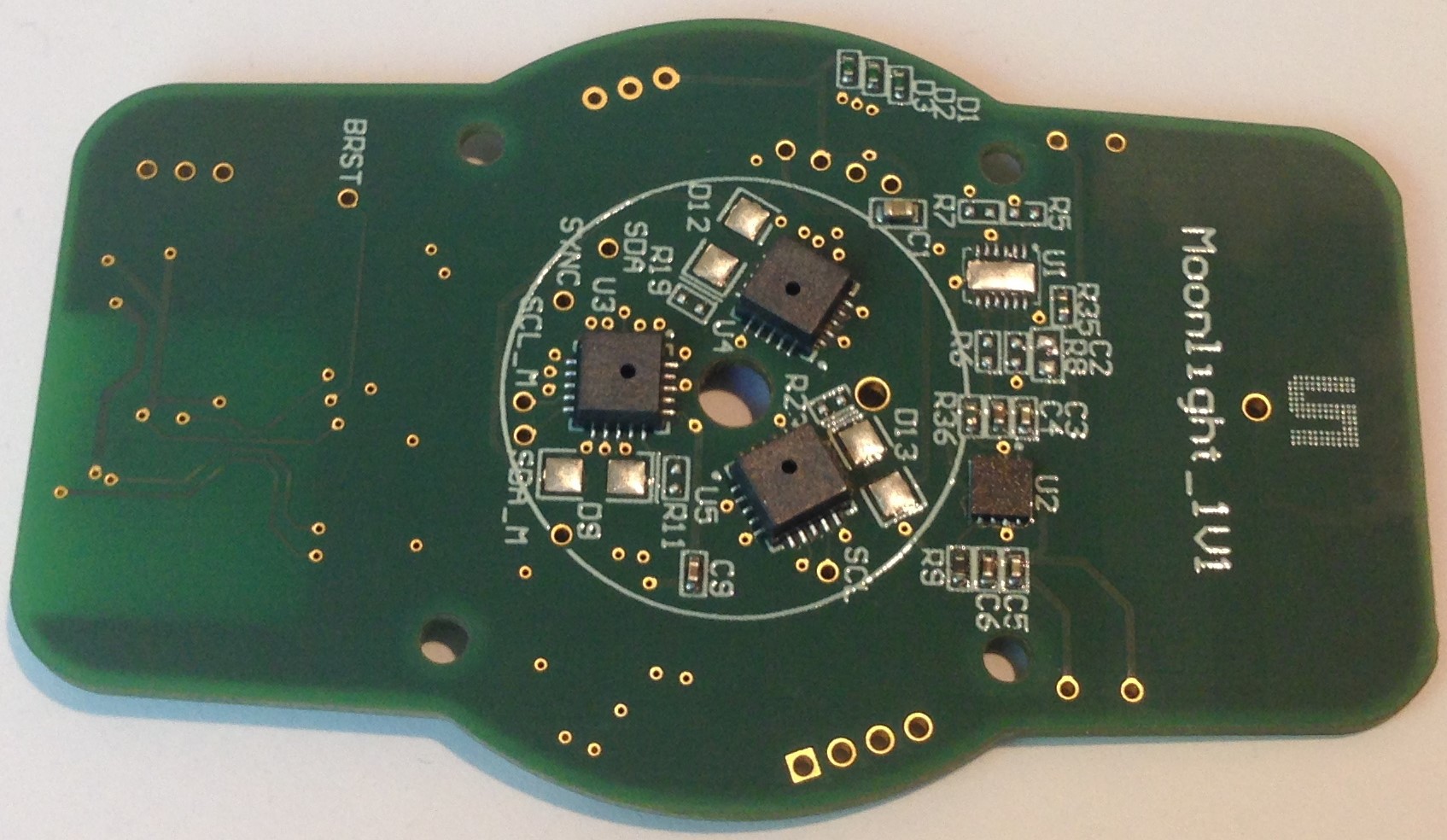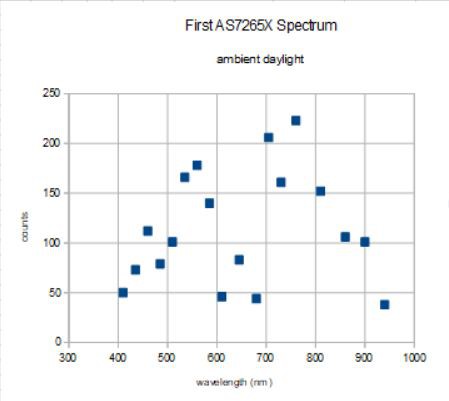04/21/2018
I received the AMS DemoBoard yesterday and started playing with it. Curiously, it has a device marked AS7263 where I expected the AS72651 to be. Maybe these are the same device. They both have the same spectral response, but maybe only the AS72651 has the extra I2C master engine in it. Don't know. I have asked AMS in an e-mail.

There is a flex connector to interface with the 4 MBit Adesto flash, which has the firmware, not very useful for firmware copying, which is maybe the point. No firmware came with the extensive documentation on the included USB thumb drive.
You can see the big solder pads for adding source leds. The tri-foil arrangements of the sensors is pretty nice; this means all three sensors will see the reflected light emitted from the object. This will be hard to replicate on the small board I chose so it might be worth increasing the board size just for this arrangement, which seems ideal.
After I realized I needed to use the USB cable that came in the kit to connect to the board (the cable has a built in FTDI connector) I was able to quickly and intuitively gather my first data. I took a continuous set of ~25 samples, saved the data to a file and imported the data into an open office spreadsheet. I couldn't figure out how to plot it easily so I just hand-typed in one of the sample sets versus the bin wavelength:
 This was with the three sensors pointed at the window looking outside in bright sunlight. The peak at ~550 nm makes sense since the dominant color is bright green reflected off of the sun-lit oak trees. But the largest intensity is at ~760 nm, deep in the red. There is one of those digikey red rulers in the field of view. I also made no attempt to correct for dark current, etc. Just wanted to see 1) if the three sensors worked and 2) what kind of data I could expect. So far so good. Now I just need to buy the three sensor ICs, obtain and load the firmware, and I should be able to get my board to do the same.
This was with the three sensors pointed at the window looking outside in bright sunlight. The peak at ~550 nm makes sense since the dominant color is bright green reflected off of the sun-lit oak trees. But the largest intensity is at ~760 nm, deep in the red. There is one of those digikey red rulers in the field of view. I also made no attempt to correct for dark current, etc. Just wanted to see 1) if the three sensors worked and 2) what kind of data I could expect. So far so good. Now I just need to buy the three sensor ICs, obtain and load the firmware, and I should be able to get my board to do the same. Kris Winer
Kris Winer
Discussions
Become a Hackaday.io Member
Create an account to leave a comment. Already have an account? Log In.
I am sure I will get around to this eventually. I don't have any CFLs around, but I would like to get some narrow band light sources for testing.
Are you sure? yes | no
CFL have rather well defined spectrum lines so can you made next measurement on one of them? Or any other "standard" light for comparison.Thanks.
Are you sure? yes | no